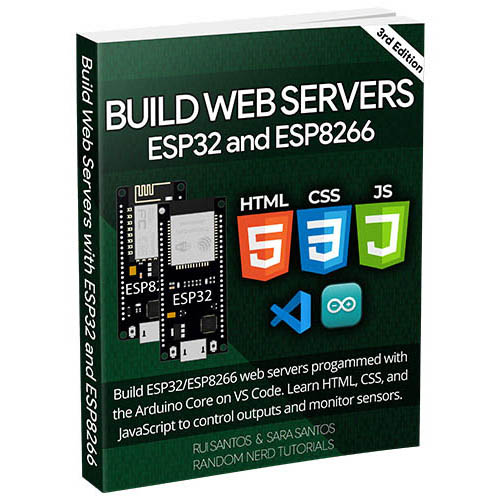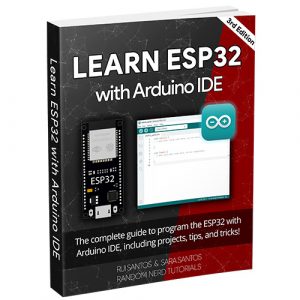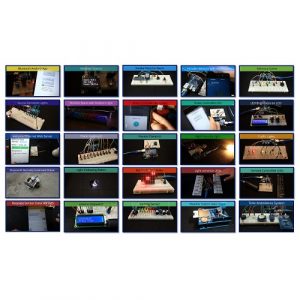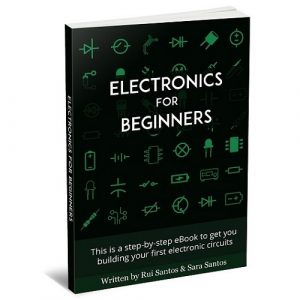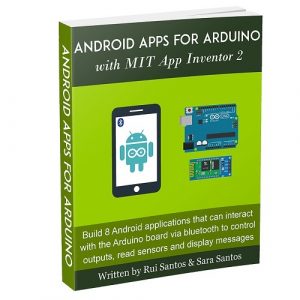Description
Build Web Server projects with the ESP32 and ESP8266 boards to control outputs and monitor sensors remotely. Learn HTML, CSS, JavaScript and client-server communication protocols.
This eBook has approximately 600 pages. You can check the current Table of Contents below.

eBook introduction: get started with HTML, CSS, JavaScript and web servers with the ESP32 and ESP8266 boards. Read this section to learn how to follow the eBook, download all code and other useful resources.

Install all the tools required throughout the eBook: Visual Studio Code, pioarduino IDE Extension and Arduino IDE (not mandatory).
- Installing VS Code and pioarduino IDE
- Installing Arduino IDE
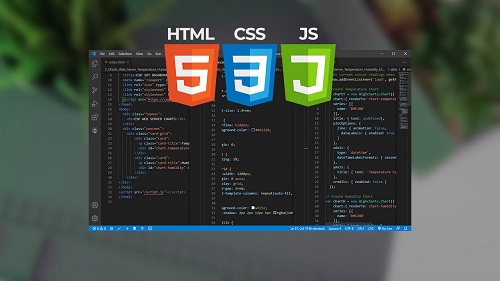
Learn HTML, CSS and JavaScript basics. HTML to define the content of web pages; CSS to specify the layout and style of web pages; JavaScript to program the behavior of web pages.
- Getting Started with HTML
- Styling HTML Content with CSS
- Getting Started with JavaScript
This is not meant to be a web development course. You’ll learn the basics to build your own web pages and become familiar with most HTML, CSS and JavaScript terms. By the end of the eBook, if you need additional features for your projects, you’ll have an idea on how to search for them.
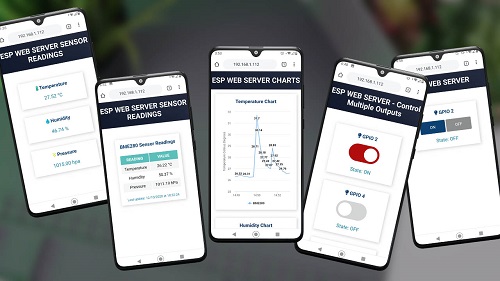
Learn how to build web server projects with the ESP32 and ESP8266 boards to control outputs and monitor sensors remotely. You’ll learn how to build web pages to control outputs (buttons, toggle switches, and slider) and display sensor readings (text, tables and charts).
You’ll also learn different client-server communication protocols: HTTP requests, WebSocket and Server-Sent Events (SSE).
- Introducing Web Servers
- 1.1 – Hello World Web Server
- 1.2 – Hello World Web Server (Serve Files from Filesystem)
- 1.3 – Hello World Web Server (Arduino IDE Software)
- 2.1 – Web Server – Control Outputs (ON/OFF Buttons)
- 2.2 – Web Server – Control Multiple Outputs (Toggle Switches)
- 2.3 – WebSocket Web Server: Control Outputs (ON/OFF Buttons)
- 2.4 – Web Server with Slider: Control LED Brightness (PWM)
- 2.5 – WebSocket Web Server: Control Multiple Outputs
- 3.1 – Web Server: Display Sensor Readings (SSE)
- 3.2 – Web Server: Display Sensor Readings (Table)
- 3.3 – Web Server: Display Sensor Readings (Charts)
- 3.4 – Web Server: Display Sensor Readings from File (Charts)
- 4.1 – Web Server with Input Fields (HTML Form)
- 4.2 – HTTP Authentication: Password Protected Web Server
- 4.3 – Wi-Fi Manager for Web Server
- 4.4 – Multiple Web Pages (with Navigation Bar)
- 4.5 – Over-the-air (OTA) Updates for Web Server
We provide all the needed files to build the project examples (for the ESP32 and ESP8266 boards).
- Access Your ESP32 and ESP8266 Web Servers
- Setting the ESP32 and ESP8266 as an Access Point
- ESP32/ESP8266 Static IP Address
